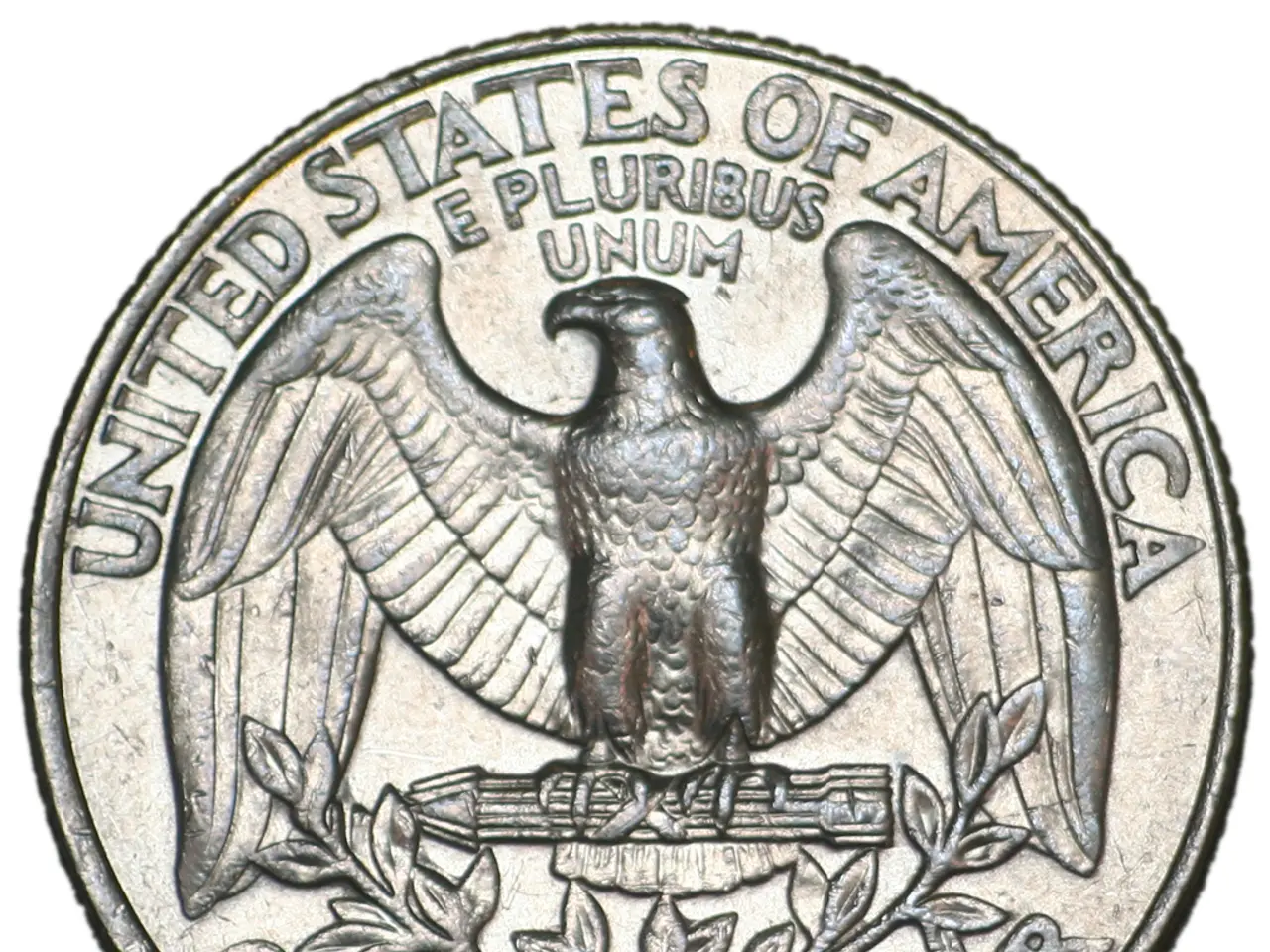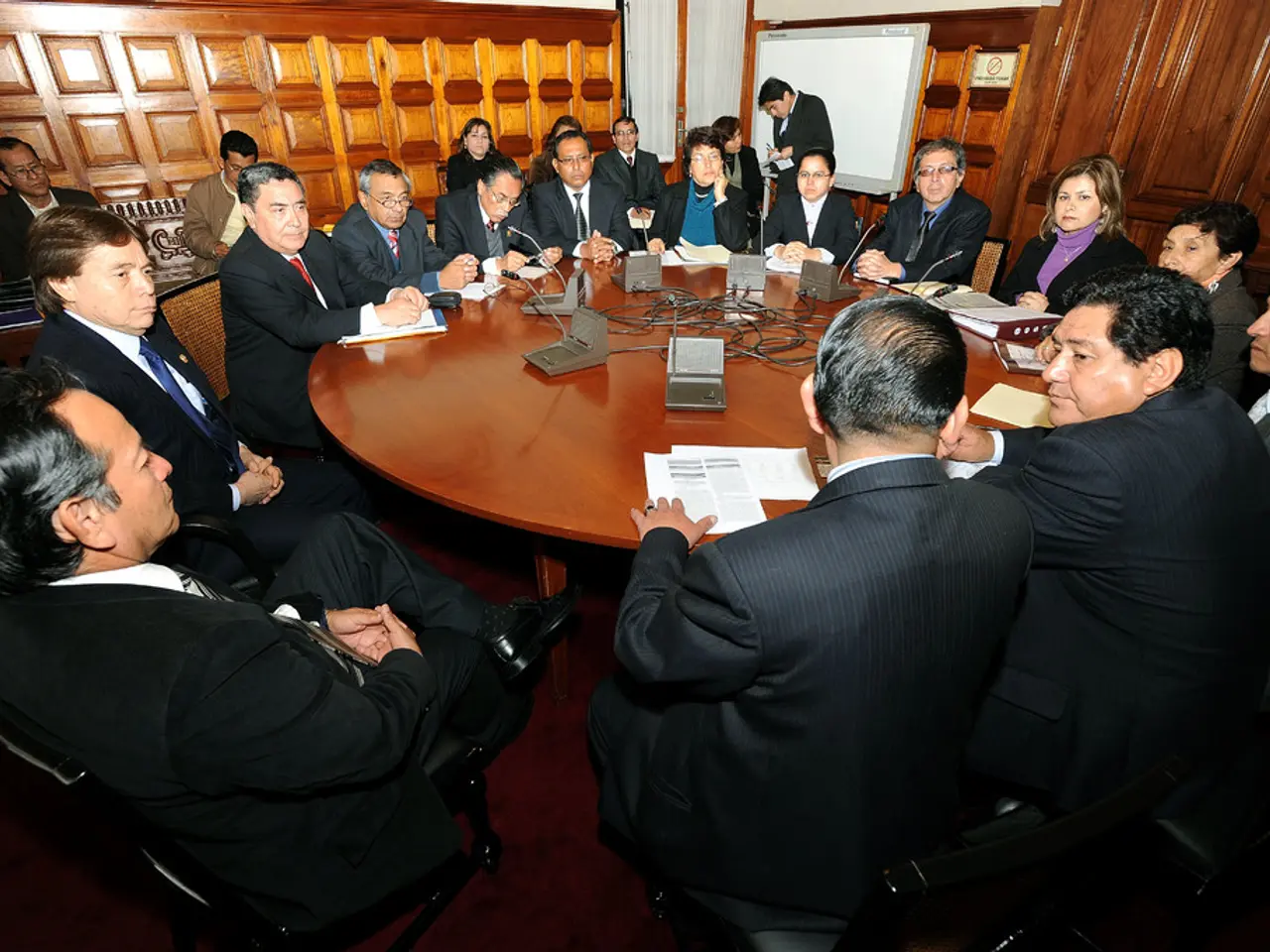Hiring efforts by companies are faltering due to lingering doubts over future plans
President Donald Trump's economic policies, implemented during his administration from 2017 to 2021, had a significant impact on the job market in the United States. Here's a breakdown of some key policy actions and their effects:
The Tax Cuts and Jobs Act (TCJA) of 2017, which lowered the corporate tax rate from 35% to 21%, was aimed at stimulating investment and hiring. Proponents argued that the reduced individual income tax rates would increase consumer spending, leading to stronger job growth and wage increases. In the short term, there was indeed a noticeable increase in job growth and wage increases, particularly in 2018 and 2019, with unemployment falling to historic lows (around 3.5%). However, critics argue that the benefits of the TCJA favored corporations and wealthy individuals more than workers broadly.
Another significant policy was deregulation, with the Trump administration rolling back several regulations, especially in environmental and financial sectors, with the goal of reducing business costs. Some industries, like energy and manufacturing, saw a boost or stabilization in jobs as a result. However, the deregulatory environment also sparked concerns over long-term sustainability and worker protections.
Trade policies and tariffs, such as those imposed on imports from China and other countries, aimed to protect U.S. manufacturing jobs. While some domestic manufacturers benefited, tariffs also raised input costs and led to retaliatory tariffs that affected exports, creating mixed outcomes across sectors. Some economists contend that the tariffs disrupted supply chains and limited job growth in export-dependent industries.
Before the COVID-19 pandemic, the U.S. experienced steady job creation and low unemployment, continuing trends from the Obama administration but with some acceleration in certain sectors. Labor force participation rates remained relatively stable, though wage growth was modest for many.
The pandemic in 2020 led to unprecedented job losses, temporarily overriding policy effects. Government stimulus packages, including some enacted under Trump, helped mitigate deeper employment declines. However, recent job gains have been revised down, and the unemployment rate has slightly risen. The economy added 73,000 jobs last month, lower than economists' expectations.
The ongoing uncertainty caused by policy changes, such as on-and-off-again tariff policies, has been attributed to smaller job gains in recent months. For instance, the Taylor Group Inc., an industrial and equipment manufacturer, has faced difficulties expanding due to tariff policies. The slower growth in payrolls signals that cracks in the labor market are deepening.
Despite these challenges, some sectors continue to show growth. Most of the job gains in July were driven by increased employment in the health care industry. Wages also continued to grow, with a 0.3% increase from the prior month and a 3.9% increase over the year. However, the professional and business services industry and government employment fell in July amid the Trump administration's efforts to slash the federal workforce.
The overall impact of President Trump's economic policies on long-term job market growth remains debated among economists, with COVID-19 adding complexity to the evaluation. Diane Swonk, the chief economist at KPMG, expresses concern that the underlying economy has slowed significantly and that headwinds are mounting as we move into the second half of the year. The weak jobs report raises the chances that the Fed will cut rates at its next meeting in September.
- The recent job gains in the United States have been revised down, and the unemployment rate has slightly risen, with experts attributing smaller job gains to ongoing uncertainty caused by political changes, such as on-and-off-again tariff policies.
- Before the COVID-19 pandemic, the economics policies implemented by President Donald Trump had a noteworthy impact on various sectors, with the Tax Cuts and Jobs Act (TCJA) of 2017 being aimed at stimulating investment and hiring. The TCJA reduced the corporate tax rate from 35% to 21%, which led to a significant increase in job growth and wage increases in 2018 and 2019, especially in the business sector.
- Diane Swonk, the chief economist at KPMG, has expressed concern that the underlying economy has slowed significantly, and headwinds are mounting as we move into the second half of the year. The ongoing debate among economists regarding the overall impact of President Trump's economic policies on long-term job market growth is further complicated by the unprecedented impact of the COVID-19 pandemic.




